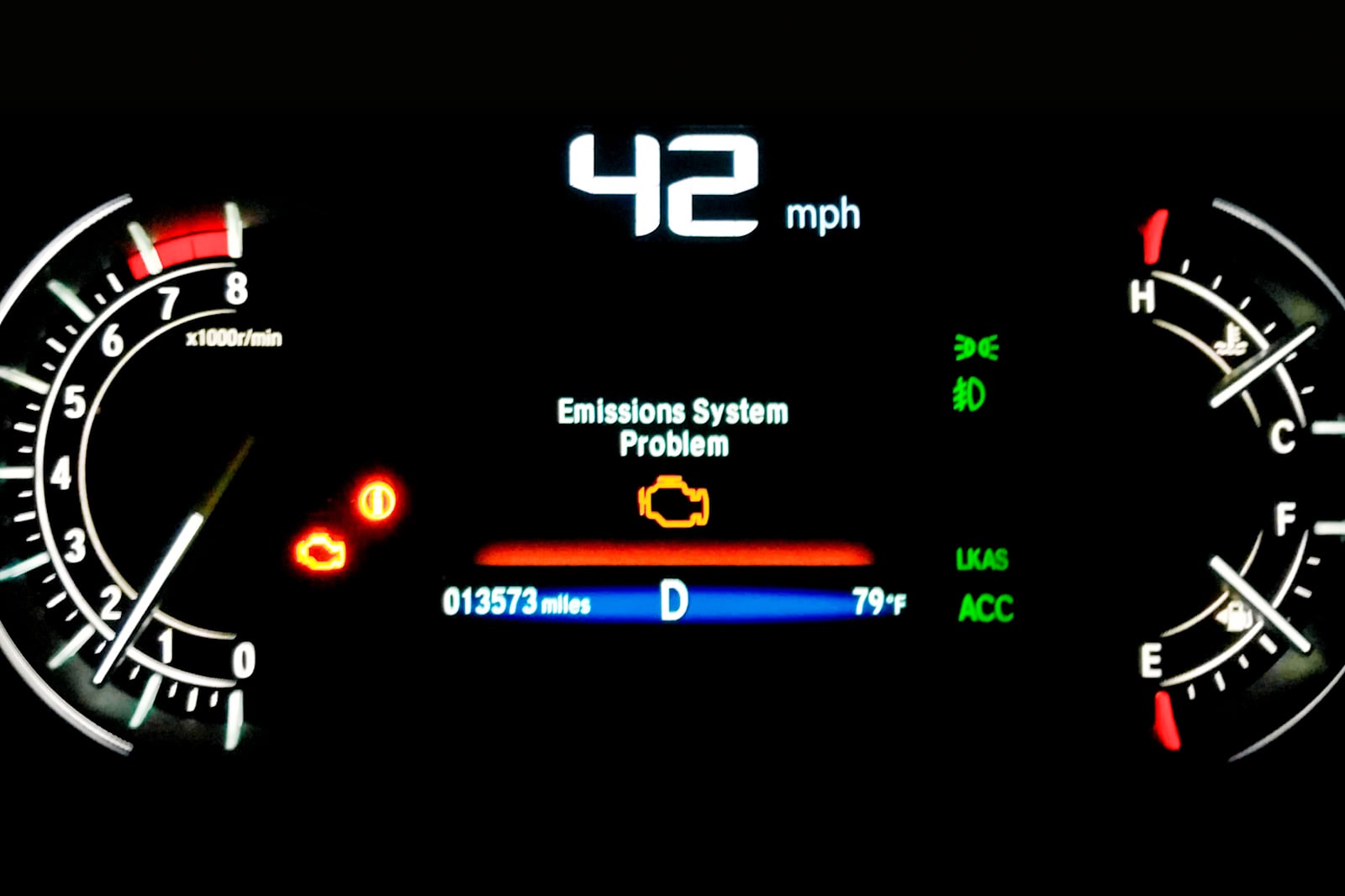As is the case with most cars, most early Honda Pilot emission system problems were due to simple catalytic converter- or oxygen sensor failures, but, as this model's engines were uprated through the years, interesting new failure modes were introduced to their emission control systems. Many of the second-generation Honda Pilot's emission system problems stem from their clever (but troublesome) cylinder-deactivation hardware (also fitted to FWD first-generation Pilots from 2006), which can allow the engine to shut down one bank of three cylinders in low power-demand driving, and the third generation's unique problem originates from its direct fuel-injection system.
Any serious fault in an engine's emission control system will trigger the onboard computer to log a fault. This will be accompanied by an emissions system problem alert on any Honda Pilot, which will tell the driver that something is wrong by illuminating a warning light in the instrument cluster. But those warning lights only show cryptic symbols, so what does that random light for an emissions-system problem even mean on a Honda Pilot when it suddenly illuminates? A warning light could be triggered for many reasons, so an onboard diagnostic (OBD-II) scan will be needed to gather more information about the specific problem at hand.
While enhancements such as VCM (Variable Cylinder Control) and direct fuel injection added to the efficiency of the Honda Pilot's engine, they also added extra layers of complication and introduced additional failure points to the Pilot's emission control system. With these specific innovations in mind, let's see what a Honda Pilot Check Emission System warning light could mean.
Emission control system problems on a Honda Pilot can have numerous possible causes, with the main culprits usually being:
Of these three issues, only the latter two are unique to the Honda Pilot (and many other Hondas with the J35-series engine). Failure in the VCM system can cause excessive oil consumption, leading to fouled spark plugs and contaminated catalytic converters. This problem could appear on either the 2008-2011 pre-facelift or facelifted 2012-2015 second-generation models.
For the third-generation Pilot, the addition of direct fuel injection introduced the possibility of fuel injector- or high-pressure fuel pump (HPFP) failure to this mix of issues, with 2016-2018 model year Pilots being the most prone to developing this problem. This is most likely caused by contamination of the fuel channels during production, which would be detrimental to the tight tolerances in the HPFP and injectors.
If your first- or second-generation Honda Pilot alerts you to an emission system problem, the chances are that it won't bring the car to a grinding halt right away. The only exception on these models will be if the warning light appears alongside a rattling noise from underneath the car, because that could indicate a disintegrating pre-catalyst, which may cause loose pieces of catalyst to enter the combustion chambers via their exhaust ports, causing serious internal damage to the engine.
The third-generation Honda Pilot, specifically 2016, 2017, 2018, and 2019 model years, is a different matter, however, because direct fuel injector malfunctions on these models could cause various problems in the cylinders. It may cause a rich-running condition (seen in error code P0430) and misfires, which will damage the cylinder bores and foul the spark plugs, which will in turn damage catalytic converters, or it may cause a lean-running condition on one (or more) of the cylinders, possibly damaging the pistons or cylinder heads.
VCM (Variable Cylinder Control) problems are not quite as serious in the short term, so there should be enough leeway before its effects become serious enough to cause secondary damage. Bear in mind that this will still need attention as soon as possible, because the possibility of poisoning the catalysts and accelerating engine wear grows with every passing mile. Crucially, the VCM unit's primary failure mode is oil leakage to the outside of the engine, where it may spill hot oil onto the alternator, damaging this very pricey component and causing a loss of oil pressure inside the engine, which may result in damaged engine bearings and camshafts.
The key factor in making this decision revolves around misfires. If the vehicle reports an emission system problem but still runs smoothly, the chances are that it's switched to its "limp-home" mode, which could cause reduced performance and impair drivability, but the system should be able to protect the engine from other damage.
If there's any sign of a misfire, it's best to pull over and call the towing service. Driving with a misfire will cause additional damage to catalysts and oxygen sensors, turning a potentially easy fix into a major expense. There's an added complication when a third-generation Honda Pilot experiences injector failure because it immediately locks the transmission in third gear and lights up the instrument cluster with engine- and transmission warning lights, allowing you to drive home but actively discouraging you from doing so.
There is no single, simple emission system problem fix for the Honda Pilot. Some emission system errors are fairly easy to repair for a moderately-capable home mechanic, but VCM problems and faulty fuel injectors are likely outside the scope of non-professional mechanics. You can follow this checklist:
Replacing the VCM gasket should cost around $550 for parts and labor, but a new OEM VCM solenoid unit has a retail price of about $500, excluding fitment. A new set of four direct fuel injectors for a 2016-on Honda Pilot costs about $260 from the dealership, but labor to replace them will cost as much as the parts alone, both at the dealership and on the aftermarket. Better hope the high-pressure fuel pump doesn't need to be replaced, though, as that item alone retails for almost $600 excluding fitment. Smaller components, such as oxygen sensors, would cost around $125 from the agents, and many of these items are easy enough to replace yourself.
 CarBuzz
CarBuzz

